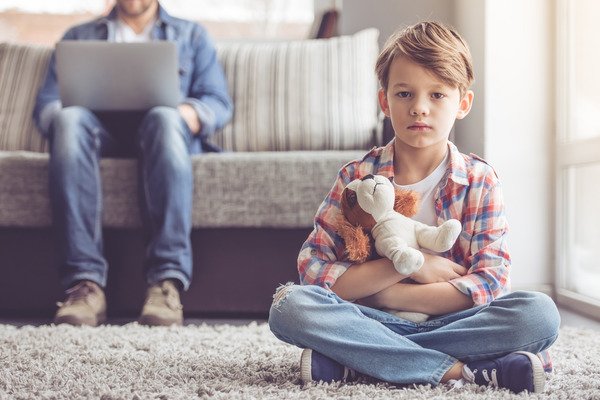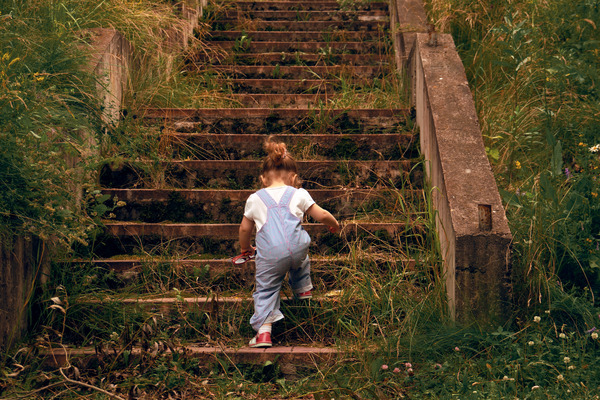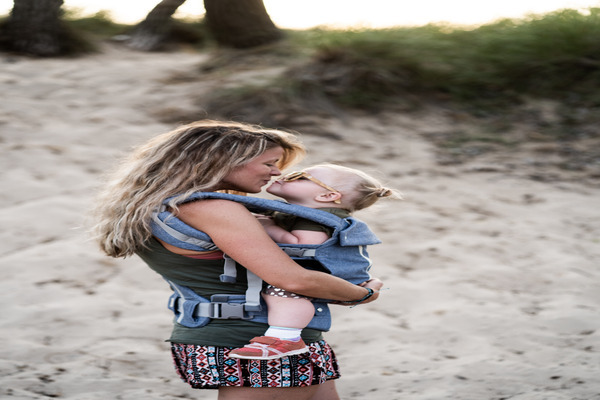Why does attachment style affect how we relate to others as adults? What types of attachment exist and what do they imply? Discover how to identify your attachment style.

Each person acts differently in their relationships, but why do we behave this way? According to attachment theory, this is due to the way our parents treated us. The bond established between the baby and its main caregiver is what will make us behave in one way or another in our relationships. So how can we know what type of attachment characterizes us?
What are types of attachment?
The attachment styles They are the specific way that people have when relating to others. According to attachment theory, developed by psychologist Mary Ainsworth and psychiatrist John Bowlby in the 1950s.
This theory suggests that our attachment style ends up marking the dynamics with which we relate to others in adult life. That is, the way we bonded with our caregivers can determine our relationships in adulthood.
It is estimated that there are four main attachment styles in adults: secure, anxious, avoidant and fearful-avoidant (aka disorganized). The last three are considered insecure forms of attachment. Some research highlights that different types of attachment can also end up determining the possibility that some people suffer from anxiety.
Types of attachment and their characteristics
Insecure or avoidant attachment
People with these types of attachment They often have difficulty becoming physically and emotionally intimate with others. It usually develops because caregivers during childhood were strict, emotionally distant, or absent. Some of the characteristics of typical parents or caregivers of this attachment may be the following:
- Independence: The caregivers were not there at important moments and expected you to act with a certain independence.
- Emotional rejection: The parents rejected any needs or emotions on the part of the children or ignored them.
- They demanded too much responsibility: People with these types of attachment could have been children who had too many responsibilities or positions that did not correspond to them due to their lack of maturity.
As a result, these types of attachment create adults who have a strong sense of independence, which means that they do not often seek the help of others for care and/or support.
Characteristics of insecure avoidant attachment
Adults with these types of attachment They usually show the following characteristics in their relationships:
- Avoid intimacy: People with a avoidant attachment They tend to constantly avoid emotional or physical intimacy with their loved ones.
- Independence: This attachment style ends up making people very independent from others, even needing a lot of space in their relationships.
- emotional discomfort: Feeling uncomfortable expressing feelings, emotions or thoughts can be a sign of an insecure-avoidant attachment style.
- Difficulties trusting others: These types of attachment in adults also usually mean a persistent feeling of distrust towards others.
- Spending a lot of time alone: Because their childhood was very lonely, people with these attachment types often require a lot of alone time.
- Fear of compromise: Independence and the need to have space in relationships with others can end up creating a certain rejection of commitments to others.
Adults with this attachment style They end up avoiding emotional intimacy with others. This means that they may end up running away from people when they get too close to them.

Ambivalent or anxious attachment
The ambivalent attachment style, also known as anxious-avoidant attachment is characterized by attitudes that indicate a fear of rejection, abandonment, as well as constantly depending on validation from others.
These types of attachment They usually come from an upbringing in which the child’s needs were not in tune. In many cases, children with these attachment styles used to not understand their caregivers due to the instability of their relationships with them. That is, the characteristics of the bond with parents are the following.
- Instability: His relationship with his parents was completely unstable: at times he was overly cuddly, at other times distant and indifferent.
- They made you responsible for their feelings: Parents used to hold you responsible for how they felt.
Characteristics of anxious or ambivalent attachment
People with these types of attachment They usually show the following attitudes in their relationships:
- Emotional dependence: These people usually need their relationships to carry out certain tasks or make decisions. That is, there is an emotional dependence on the other person.
- Sensitivity to criticism: These attachment styles tend to be very sensitive to criticism, even though it is perceived and not real.
- Need for approval from others: Feeling that others value and accept them can be one of the characteristics of this attachment style.
- Jealousy: People with these types of attachment They also tend to have a jealous attitude towards their partner and friends.
- Low self-esteem: Lack of self-esteem is also one of the characteristics of people with an ambivalent attachment style. Furthermore, they often feel that they are not worthy of love from others.
- Difficulty trusting: The ambivalent relationship with parents can cause people who have had these types of attachment to end up experiencing difficulties trusting others.
- Fear of rejection and abandonment: These people usually have a lot of fear of negative opinion from others.
People with these attachment styles often feel unworthy of love and need constant reassurance from their partners. They often blame themselves for the problems that may arise in the relationship and their jealousy together with their low self-esteem can lead to constant distrust of the other person.
disorganized attachment
These types of attachment They imply that people have extremely inconsistent behavior in addition to a constant difficulty trusting others. Typically, adults with these attachment styles tend to have suffered childhood trauma or abuse. That is, they were afraid of their parents and even felt insecure with them.
Characteristics of disorganized attachment
Adults with this type of attachment They usually have the following behaviors in their relationships:
- Fear of rejection: People with these types of attachment They are usually afraid that others may reject them, because they fear being alone.
- Inability to regulate emotions: Having suffered trauma or abuse can end up causing emotional instability.
- Contradictory behavior: People with these types of attachment They may behave erratically due to instability in their emotions.
- Anxiety: Persistent anxiety can also be one of the common characteristics of people who suffer from this type of attachment.
- Difficulty trusting others: In the same way that happens with other insecure attachment styles, people with this attachment tend to distrust the people around them.
- Signs of insecure and ambivalent attachment styles: They may present characteristics of different types of insecure attachment.
In relationships, people with these attachment styles They tend to have unpredictable behavior that is very confusing to others. That is, they alternate distant and independent behaviors with being clingy and emotional.
secure attachment
This is the healthiest attachment of all and occurs when children feel unconditional support and love from their parents. This type of attachment occurs when the caregiver provides security and is concerned with establishing communication and good contact with the children.

Can we change our attachment style?
Yes, it is possible to change our attachment style with the rest. Still, it will require a lot of emotional work. Some of the tips that you should keep in mind are the following:
- Identify patterns in a relationship: Start by analyzing how you usually behave with others. Additionally, you can also try to remember what your parents were like when you were little.
- Work on your self-esteem: In many cases, insecure attachment styles often lead to self-esteem problems. This means that to leave behind the difficulties inherent to different attachment styles, you must learn to work on your self-esteem.
- Get in touch with your real needs: Insecure attachment styles are often related to deep fears that can make your relationships not work. Therefore, it is important that you find out how you can feel more secure in your relationships. That is, you must be aware of what your needs and desires are in relationships.
- Go to therapy: If you feel that you have difficulty trusting or establishing bonds with others, it is vital that you go to therapy. A psychologist can help you identify your attachment style and understand why you act that way.
Understanding the way we interact with others is also a way of knowing ourselves. Even so, we always have time to act on our thought patterns and the attitude that derives from them.








